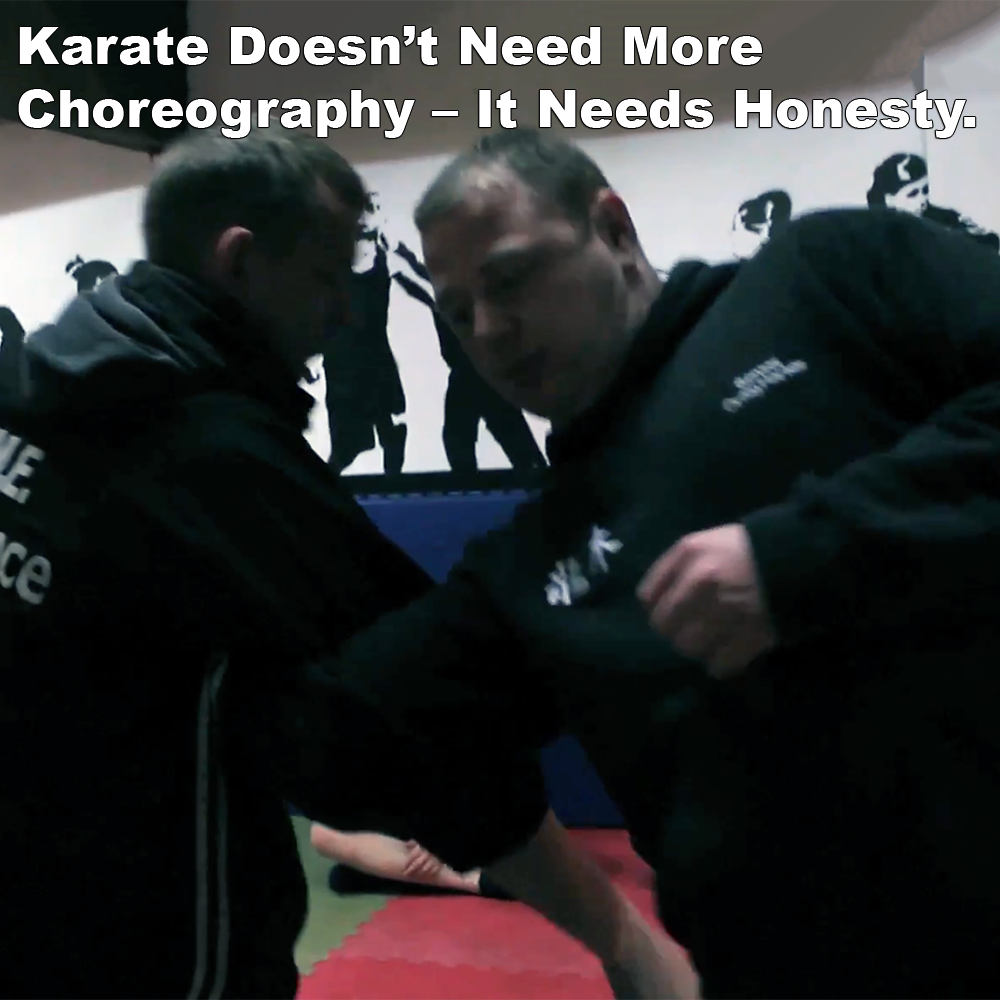
(Approx 2 minute 35 second read)
In a recent article I talked about learning from others, whether from people or other methods, it’s good to have an open-mind to everything, right?
.
Of course there are people who are deeply stuck in their ways and unfortunately, here is an example of just that.
.
A 9th dan, someone who has been practicing karate since the 1960s, commented on my article about using techniques adaptively. I wrote that techniques don’t just provide one function.
.
He said, “Gedan barai is a downward block. Period.”
.
What surprises me is that someone of such high rank, an author, a founder of a traditional karate association, still doesn’t seem to get it. But maybe it makes sense for him. For some, what they teach has become who they are. Challenge the technique and they feel you’re challenging their identity.
.
Right from the beginning many people are taught ‘basic’ techniques, and they come almost sacrosanct. Something that is embedded in their psyche, they cannot be changed, they cannot be challenged.
.
I shouldn’t be surprised. Even though someone has high rank, it doesn’t mean they can see anything other than what is presented in front of them. They look at the name and how it’s always been done, that’s it.
.
To be pedantic for a moment, if you want to look at the term itself, gedan barai doesn’t mean downward block. I’ve said this so many times before, where in that term does it say block? Yet it is practiced as if the name itself dictates its sole purpose.
.
Here’s a simple question. Can you imagine how many techniques you’d have to remember in a real attack if every one of them did just one thing? It’s absurd. But that is what is being taught in modern karate. Life doesn’t work like that. Violence certainly doesn’t. Yet some cling to single-purpose interpretations as if they were universal truths.
.
Let’s look at the whole movement of gedan barai from beginning to end. Really follow the arc of the technique slowly, again, from beginning to end. If you were genuinely trying to block something coming at you, wouldn’t this movement be slower?
.
Reaction is always slower than action. Yes, it would be slower, unless of course you had the luxury of knowing exactly what was coming at you? Unless it’s choreography. Which, in his case, it is.
.
The old masters didn’t train choreography. They trained function. They weren’t interested in what something was called, only what it could do. But that curiosity was lost when karate became performance-heavy and obsessed with preserving shapes instead of understanding them.
.
Gedan barai, like so many movements, can serve multiple purposes depending on context. But you only see that if you’re willing to look, instead of reciting the same rhetoric, the same one-line explanation that has been passed down without question.
.
Rank doesn’t change reality. And reality is exactly what matters if we want karate to mean something beyond the dojo floor.
.
A comment like this from a 9th dan? Sorry, but shouldn’t someone with this rank mean an open mind? Someone who has taken the time to understand karate’s history, its intent, its practical beginnings? If you want to use gedan barai – or any other technique – as a simple choreographed block, that’s your choice, your privilege. But at least be honest about it. Some practitioners hang on every word of someone with such high rank, and these practitioners deserve the truth, they deserve honesty.
.
Acknowledge that what you’re doing isn’t real, that it’s choreography, that the karate you’re practicing is aesthetic and impractical. What you do in the dojo is your choice, but let’s not pretend it’s something it isn’t.
.
.
Written by Adam Carter – Shuri Dojo
.
.
Phone Credit: With thanks to Nigel Lee-sensei
